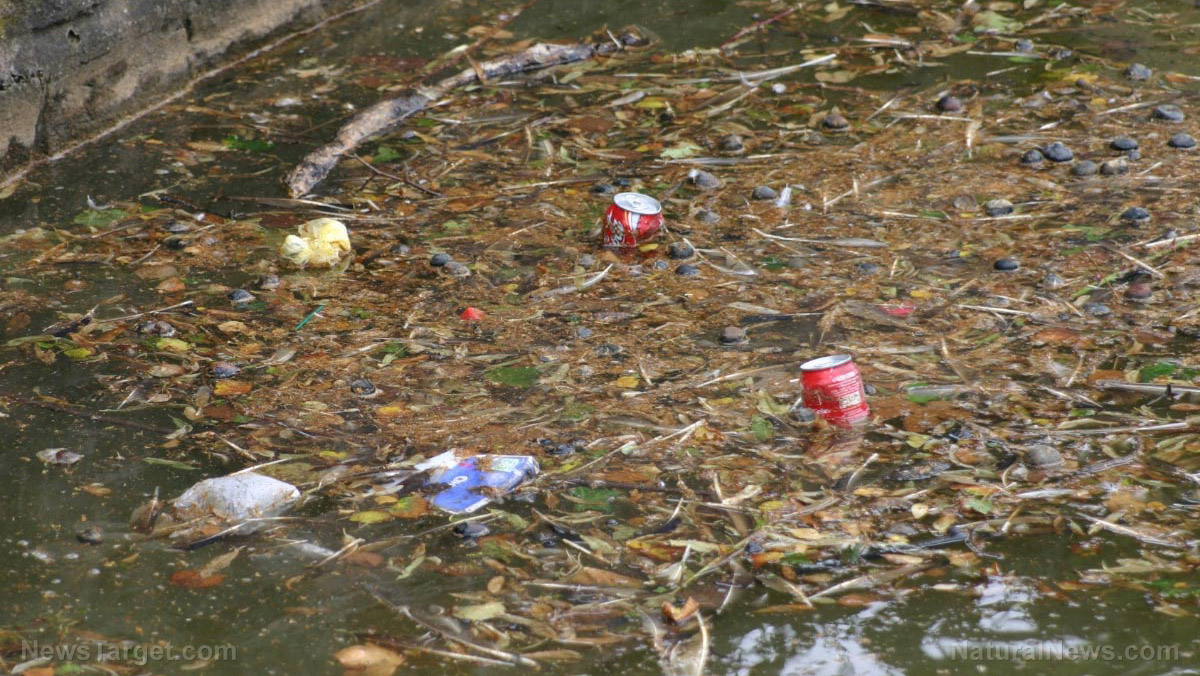Follow these simple tips to minimize your exposure to “obesogens” – everyday chemicals that make you fat
06/15/2018 / By Vicki Batts

In the U.S., obesity is easily one of the nation’s biggest health problems. Approximately 40 percent of American adults are clinically obese, as are another 20 percent of children and teens – and that’s not including the number of people who are simply “overweight.” In late 2017, it was reported that obesity rates in America had reached yet another devastating peak. But it turns out that it’s not just our modern lifestyles causing the obesity epidemic: Many of the chemicals and compounds we’re exposed to can increase the risk of becoming obese. In fact, the risk is so strong that experts have nicknamed these toxins “obesogens.”
Fortunately, there are many steps you can take to avoid or reduce your exposure to these damaging compounds and support long-term health.
What are obesogens, and how do they cause obesity?
The term “obesogens” was created back in 2006, and since then, obesogens have been suggested as a possible contributing factor in the obesity epidemic. Obesogens are specific types of endocrine disruptors, which are known to disrupt how the body processes and stores fat – an effect that can have deleterious health effects. While poor nutrition, over-consumption and a sedentary lifestyle are recognized as driving forces in the obesity epidemic, scientists now believe that exposure to certain chemicals may be encouraging obesity as well.
As sources explain:
Obesogens reprogram how our cells work in two main ways: they can promote fat accumulation through increasing the number and size of fat cells or by increasing appetite, or they can make it more difficult to lose fat by changing our ability to burn calories.
Obesogens may also amplify the effects of high-fat, high-sugar diets. To put it simply, obesogens are bad news for your body: They alter fat storage by increasing the size and numbers of fat cells, and they can make it harder to lose weight by interfering with how your body burns energy, messing with your appetite and increasing the ill effects of a Western diet.
Where to find obesogens and how to avoid them
Obesogens can be found in hiding in an array of “everyday” products: Artificial sweeteners, flame retardants, pesticides and herbicides, plastics, and repellent coatings on clothing and cookware can all be sources of these damaging chemicals.
As the National Institute of Environmental Health Sciences notes, there are a host of known obesogens, including:
- Phthlates – Used in an array of consumer goods to make them “soft.”
- Bisphenol A (BPA) – Found in plastics and other goods.
- Tributyltin – A heat stabilizer for PVC pipe that’s also used as a fungicide.
- Polychlorinated biphenyls (PCBs) – These were used in paints, cements, fluorescent light ballasts, sealants, and adhesives in the past. PCBs are banned but still persist in the environment.
- Pesticides
- Flame retardants
- Cigarette smoke
- Air pollution
There are many everyday products that contain obesogens, like household cleaners and cosmetics. Dr. Ana Catarina Sousa and her research group, from the University of Aveiro and University of Beira Interior, Portugal have pinpointed the greatest exposure risks.
Some of the most common routes of indoor exposure to obesogens include: Cosmetics, kitchen utensils and cookware, cleaning chemicals and diet. The researchers say diet is actually one of the biggest routes of exposure to these toxins.
“Obesogens can be found almost everywhere, and our diet is a main source of exposure, as some pesticides and artificial sweeteners are obesogens. Equally, they are present in plastics and home products, so completely reducing exposure is extremely difficult — but to significantly reduce it is not only feasible, but also very simple,” Dr. Sousa explained.
Tips to avoid exposure include:
- Choosing fresh foods instead of processed
- Buying organic fruits and veggies
- Choosing natural cleaning products free of obesogens
- Reducing the use of plastic, especially for heating and storing food
- Vacuuming and dusting often to remove particulate
- Removing shoes when entering your home to avoid bringing contaminants inside
Learn more about food contamination at Ingredients.news.
Sources include:
Tagged Under: bisphenol A, BPA, chemicals, clean food, Cosmetics, Endocrine disruptors, ingredients, obese, obesity, obesogens, overweight, phthalates, plastics, prevention, tips, toxic chemicals, toxic ingredients, toxins




















